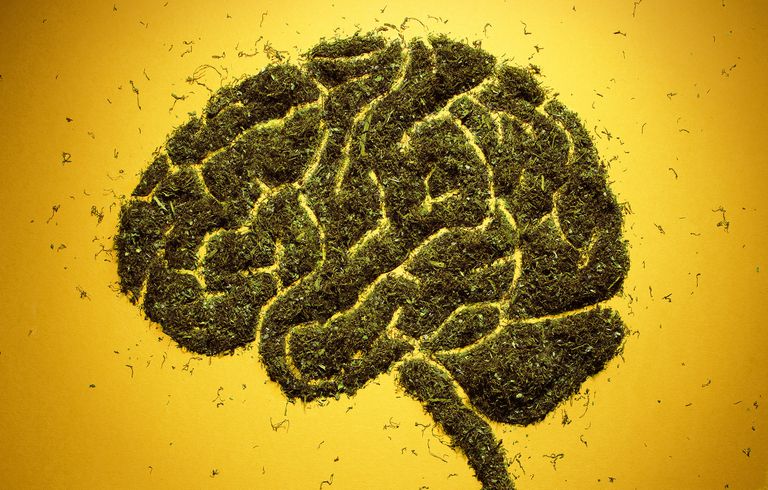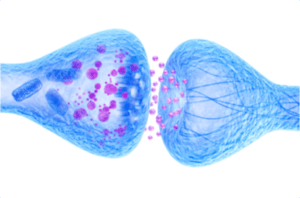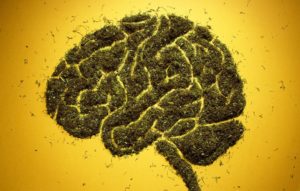
Your Body’s CB1 & CB2 Receptors

Cannabis topicals are all the rage right now, and for good reason. Tens of millions of people are afflicted with chronic pain, and many are seeking safe, non-addictive solutions to ease their suffering.
Beyond that, research suggests cannabis topicals could provide relief for sufferers of ailments ranging from sports injuries and migraines to skin conditions such as acne, eczema and, psoriasis.
Topicals represent one of the fastest-growing segments of the cannabis marketplace. But all these balms, creams and lotions can get confusing. Are cannabis topicals safe? Do they get you high? How does putting cannabis on your epidermis work?
Cannabis and the Body

The world’s most trusted scientific bodies confirm that cannabis has pain-relieving properties. But to fully understand how topicals can relieve pain and other ailments, we need to take a quick tour of the human Endocannabinoid System (or ECS).
The ECS is a vast network of receptors throughout the body. It’s responsible for modulating many physiological systemsinvolving the brain, endocrine, immune and nervous systems. Researchers have found that the ECS is essential for maintaining homeostasis or balance, in these various systems.
There are two main types of receptors or “message receivers” in the ECS, classified as CB1 and CB2 receptors. CB1 receptors are predominantly located in the brain and central nervous system; CB2 receptors are primarily in the peripheral nervous system.
The “messages” these receptors receive are chemicals that bind to the receptor and either activate it or shut it down, producing a corresponding effect within your body. The chemical compounds in cannabis that interact with the ECS are called cannabinoids – the most well-known being psychotropic Tetrahydrocannabinol (or THC), which activates CB1 receptors in the brain to create the “high” feeling.
More than 100+ cannabinoids have been identified in the cannabis plant, including non-intoxicating Cannabidiol (or CBD), and others like Cannabinol (or CBN), Cannabigerol (or CBG) and Tetrahydrocannabivarin (or THCV), whose various medicinal properties are under escalating scrutiny.
When you apply a cannabis topical to your skin, the cannabinoids interact with CB2 receptors in your epidermis and muscles. Researchers found that when such CB2 receptors were targeted, the result was reduced inflammation, an immune response that plays a role in many ailments including skin conditions and chronic pain.
Unlike anti-inflammatory medications, cannabis topicals can be used without risking unpleasant potential side effects or overdose.
Topicals and the Endocannabinoid System

Some cannabis topicals do contain THC, but when applied to the skin, the cannabinoids don’t enter your bloodstream. Instead, THC interacts with the ECS receptors outside the blood-brain barrier. Furthermore, research has concluded that “activation of CB2 receptors does not appear to produce…psychotropic effects”.
Topicals allow consumers to localize and directly target an afflicted area to reduce inflammation. People can and do ingest cannabis via smoking, vaping or edibles for generalized pain relief, but many prefer to single out that aching knee or sore neck by applying a topical directly.
Some research even indicates that cannabinoids may accelerate our bodies’ natural healing process. A study that focused on CB1 and CB2 receptors in the gastrointestinal system found that cannabinoids can promote the healing of epithelial wounds.
Our skin is composed of epithelial cells, which also line the surfaces of our organs and blood vessels. So, while further study is needed, cannabis topicals may also promote a quicker healing response for skin conditions and injuries.
Perhaps best of all, cannabis topicals offer consumers a simple, safe and low-stakes entryway into exploring the skin care benefits of cannabis. Many people still harbor fears about cannabis, but topicals are approachable, and are, in many ways, the best ambassador for the cannabis plant’s pain-relieving and healing capabilities.
The emerging research is clear in showing the tangible ways cannabis topicals work with our bodies. Just let that knowledge soak in.
Article by: GreenCulturED